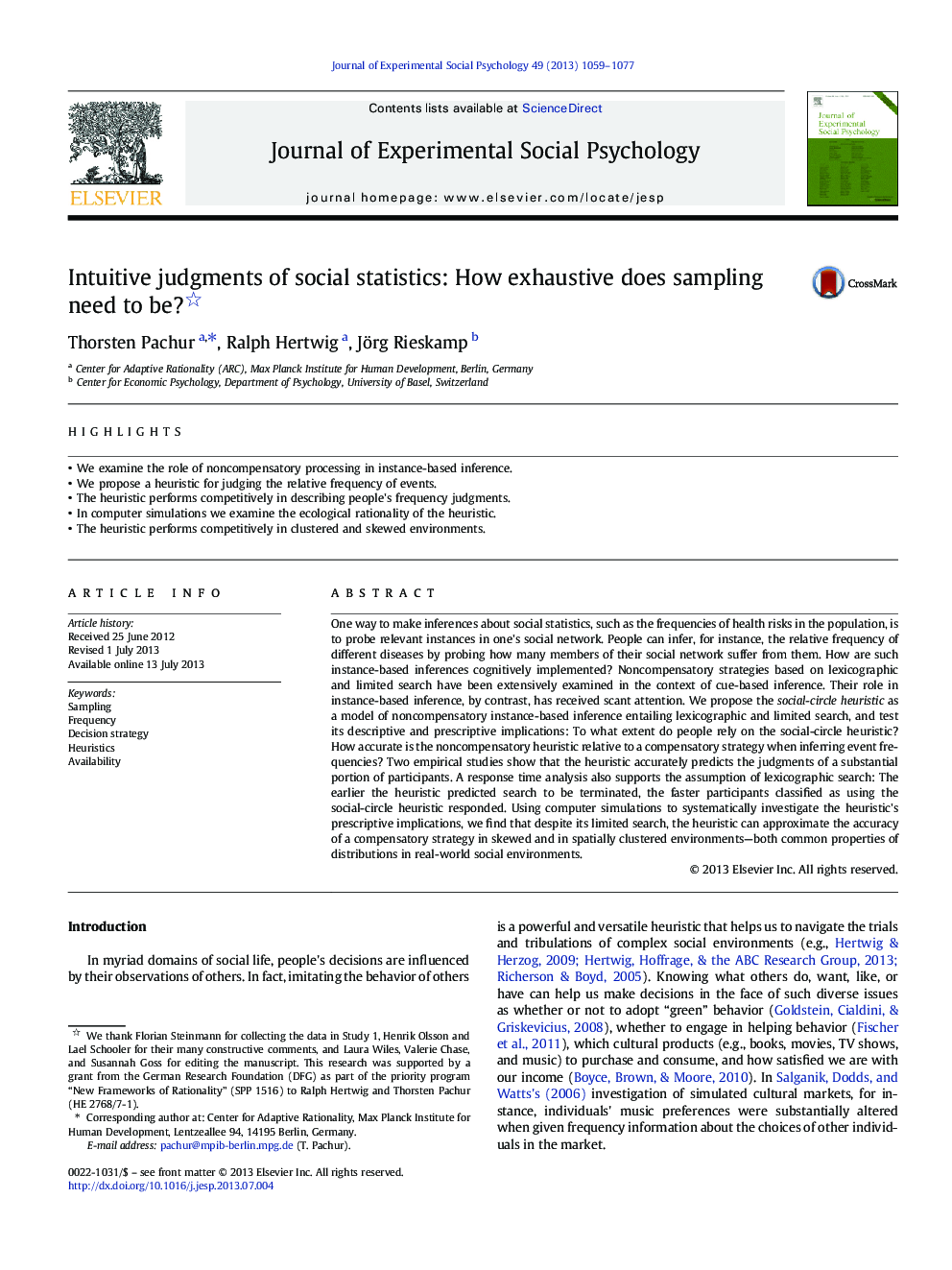| Article ID | Journal | Published Year | Pages | File Type |
|---|---|---|---|---|
| 10468546 | Journal of Experimental Social Psychology | 2013 | 19 Pages |
Abstract
One way to make inferences about social statistics, such as the frequencies of health risks in the population, is to probe relevant instances in one's social network. People can infer, for instance, the relative frequency of different diseases by probing how many members of their social network suffer from them. How are such instance-based inferences cognitively implemented? Noncompensatory strategies based on lexicographic and limited search have been extensively examined in the context of cue-based inference. Their role in instance-based inference, by contrast, has received scant attention. We propose the social-circle heuristic as a model of noncompensatory instance-based inference entailing lexicographic and limited search, and test its descriptive and prescriptive implications: To what extent do people rely on the social-circle heuristic? How accurate is the noncompensatory heuristic relative to a compensatory strategy when inferring event frequencies? Two empirical studies show that the heuristic accurately predicts the judgments of a substantial portion of participants. A response time analysis also supports the assumption of lexicographic search: The earlier the heuristic predicted search to be terminated, the faster participants classified as using the social-circle heuristic responded. Using computer simulations to systematically investigate the heuristic's prescriptive implications, we find that despite its limited search, the heuristic can approximate the accuracy of a compensatory strategy in skewed and in spatially clustered environments-both common properties of distributions in real-world social environments.
Related Topics
Life Sciences
Neuroscience
Behavioral Neuroscience
Authors
Thorsten Pachur, Ralph Hertwig, Jörg Rieskamp,
